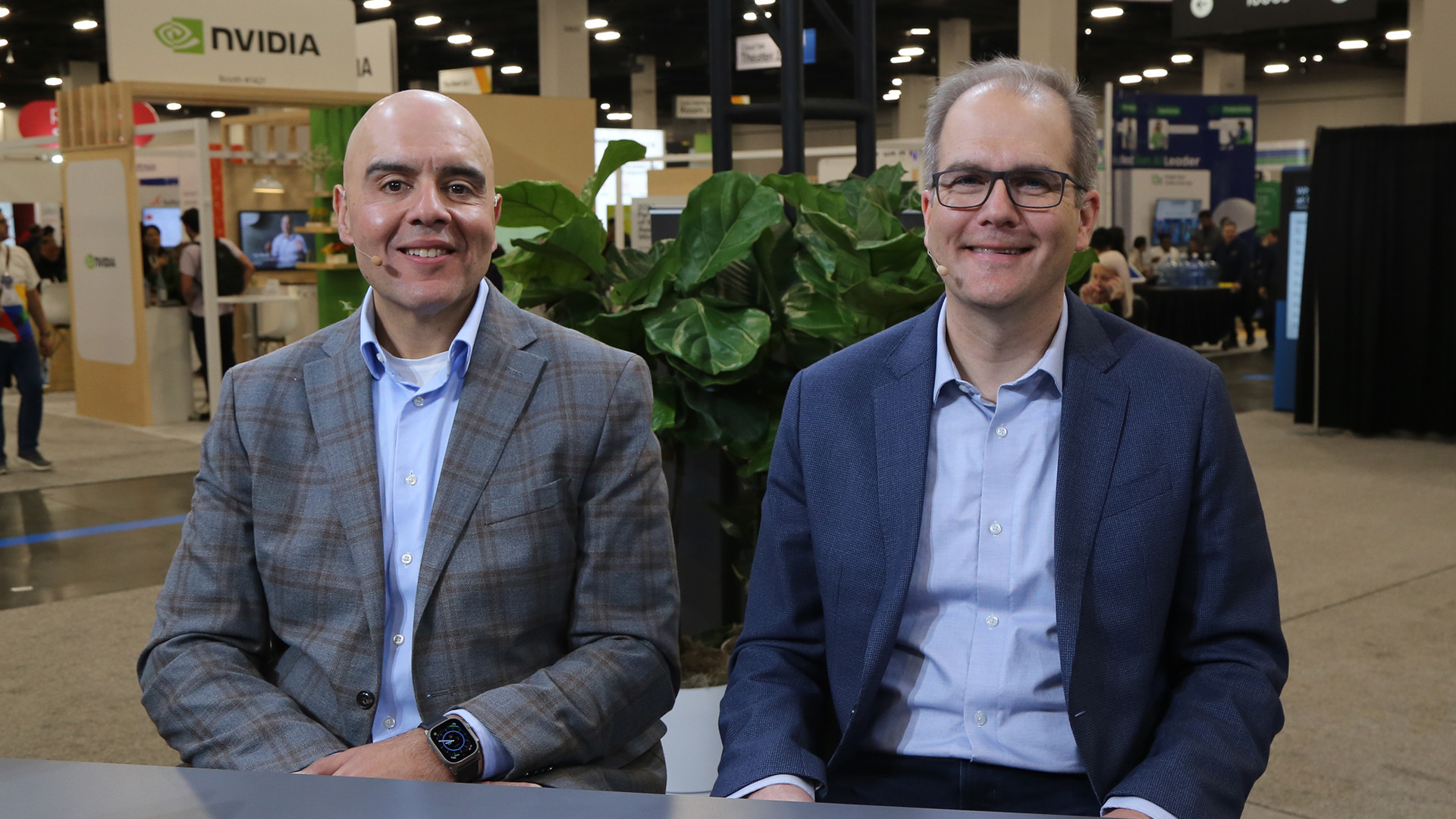 INFRA
INFRA
 INFRA
INFRA
 INFRA
INFRA
The “data-first company” buzzword is mainstream today, but back when it wasn’t, Google LLC had already embraced the ideology. Now, drawing from years of combined hardware and software experience handling swathes of data, Axion processors have been engineered by Google to bring cutting-edge artificial intelligence capabilities to the data center.
“Google has a rich history of custom silicon and systems development for specific workloads,” said Mark Lohmeyer (pictured, right), vice president and general manager of compute and machine learning infrastructure at Google Cloud. “Five generations of TPUs, three generations of video coding units and multiple generations of processors that go into Pixel phones. We were excited to apply that engineering prowess to, in many ways, a bigger space and a bigger problem, which is general-purpose data center computing.”
Lohmeyer and Mohamed Awad (left), general manager and senior vice president of the Infrastructure Line of Business at Arm Holdings PLC, spoke with theCUBE Research analysts John Furrier and Savannah Peterson at Google Cloud Next 2024, during an exclusive broadcast on theCUBE, SiliconANGLE Media’s livestreaming studio. They discussed the just-announced Axion processors, their Arm architecture underpinnings and the performance, efficiency and sustainability gains. (* Disclosure below.)
Being a leader in AI, Google built the Axion platform to solve general-purpose data center computing problems for today’s enterprises, most of which revolve around proliferating AI workloads. The solution has been to increase power and processing capabilities in successive chip generations. But that has come at the expense of efficiency, with data center energy requirements soaring. Leveraging Arm’s expertise in efficient CPU design, Axion boasts significant performance enhancements and energy efficiency gains compared to traditional x86 processors.
“The reality is that the data center is trying to deal with all these issues around performance, sustainability and efficiency,” Awad said. “These data centers are built [so that] there’s a certain amount of power that’s brought into them, and you’re trying to cram as much performance and efficiency out of them as possible to keep up with AI and all these new workloads. What’s interesting about what Google has done is by building silicon from the ground up, they’ve been able to start to optimize what that infrastructure looks like so you can get the most efficiency out of it.”
A key aspect of Axion’s design philosophy is its compatibility with Google’s workload-optimized infrastructure strategy. By tailoring systems-level solutions across compute, storage and networking, Google aims to meet the diverse needs of modern applications, particularly those powered by AI. The Axion processor, with its superior performance and energy efficiency, is poised to drive innovation and scalability for Google Cloud customers.
“The Axion processors will have 30% higher performance than the fastest Arm processors available in the cloud today,” Lohmeyer said. “They’ll have 50% higher performance than comparable x86 generation processors and 60% better energy efficiency than comparable x86-based instances. These benefits are huge if you think about our customers looking to scale their workloads.”
The strategic partnership between Google and Arm extends beyond hardware development, encompassing software optimization and ecosystem support. Google’s commitment to open-source initiatives aligns seamlessly with Arm’s longstanding involvement in fostering community-driven innovation, Awad added.
Here’s the complete video interview, part of SiliconANGLE’s and theCUBE Research’s coverage of Google Cloud Next 2024:
(* Disclosure: Arm Holdings sponsored this segment of theCUBE. Neither Arm nor other sponsors have editorial control over content on theCUBE or SiliconANGLE.)
THANK YOU